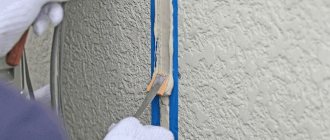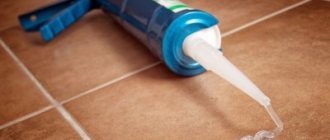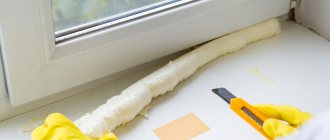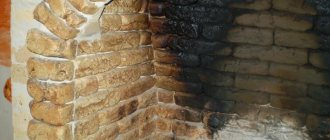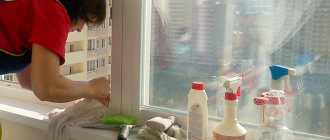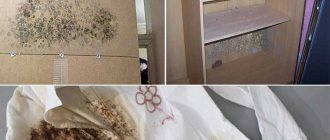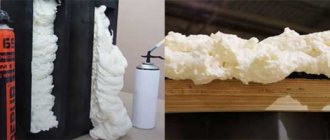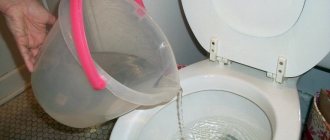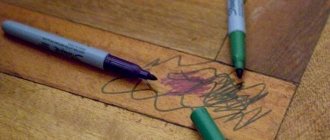Silicone sealants are very often used for finishing work. It happens that the mass has hardened and it is necessary to dissolve the silicone acryplast to a liquid consistency. When working, safety precautions are not always observed, and the substance gets on your hands, clothes, and stains adjacent surfaces. In such cases, you need to know how to properly clean without damaging the surface.
Methods for removing sealant
The first method of removing material is the most energy-intensive, but at the same time the cheapest.
However, it can only be used in areas where surface damage is not visible. To remove silicone sealant from tiles or bathtubs in an inconspicuous place, you can use coarse salt or pumice, and you will also need a large, sharp knife. To reduce surface damage, you will have to act with extreme caution and precision. Initially, you need to remove large build-ups of material from the surface.
To do this, it is most convenient to use the back of the knife. After this, you can carefully remove the remaining sealant using a pumice stone. You just need to rub the surface with it and thoroughly rinse off any remaining silicone with water.
It often happens that after removing the grease, a small stain remains on the surface of the tile or bathtub. In this case, you can get rid of it with regular dishwashing detergent. Simply apply it to the stain and wipe with a damp cloth or sponge.
Experts recommend using a metal dish sponge or scraper if you need to clean the sealant on the bathroom or tiles. They will help not only remove old silicone, but also remove any remaining greasy marks and soap scum.
If silicone has come into contact with a smooth and even surface relatively recently, it can be easily removed with a damp cloth or spatula. However, if it has been on it for a long time, then it is more advisable to use acetone. It works great on such stains, but before using it, your hands should be protected with gloves so as not to damage the skin.
Cleaning stains from tiles
Often, in order to clean silicone from tiles, ordinary table salt is enough. But in this case, you will have to carry out mechanical actions that will help cope with the problem. To carry out the manipulations, you will need rags, a soft cloth and table salt.
After everything is prepared, you can start working:
- Remove large deposits of silicone using a sharp knife. It can also be used to tear off large areas of sealant that has already slightly fallen off the surface.
- Now you need to apply a small amount of salt to the cloth and wet it. You can begin to remove the remaining parts of the silicone using circular movements. Do not press too hard on the cloth so as not to damage the tiles or the bathroom. The sealant will come off just fine, you just need to be patient.
Glass can be cleaned in the same way. But a slightly different method also works great with this material. To do this, you will need a hairdryer to heat the surface of the glass. In this case, the silicone simply melts and can be removed with a regular sponge. All you have to do is wipe the glass with detergent and there will be no traces of sealant left.
https://youtube.com/watch?v=gMccJUdsyf8
If you need to wash off silicone sealant from a flat and smooth surface, then a regular stationery knife and acetone will do the job perfectly. First, the silicone must be completely removed from the surface with a sharp knife, and the remaining residue must be washed off with a cloth soaked in acetone. If you work very carefully, you may not even scratch the surface.
In order to avoid getting silicone on open areas of tiles, bathtubs or windows, you can use regular masking tape. It is glued to the surface and then the seams are coated with sealant. The material will remain in the seam, and the rest of the surface will be clean after removing the tape.
Rinse off hands and clothes
Often when working with sealant, it gets on clothes. In this case, you need to act as quickly as possible - removing fresh silicone is much easier than dealing with absorbed material. To do this, you will need to stretch the fabric and pick up the sealant with the sharp and thin end of a knitting needle or knife. Carefully, without making sudden movements, you can remove the silicone. But you can also deal with dried material. To do this, just soak a piece of damaged clothing in vinegar and leave for a few minutes. All that remains is to wipe the contaminated area with a cloth and remove the silicone.
It will be difficult to dissolve silicone sealant on your hands at home. After all, vinegar and acetone are very harmful to the skin. But a little salt or a piece of pumice will perfectly help remove particles of the product from the skin. To do this, you need to pour warm water into a small container and dissolve salt in it, hold your fingers or palms in this solution and lightly rub with a pumice stone. The glue comes off the skin quite easily. But if the sealant ends up on a large area of skin, then the procedure will have to be repeated several times.
How to remove the drug
Considering that after polymerization the product adheres firmly to the base, the easiest way is to cut it off or scrape it off. This is only possible for rough surfaces that are not afraid of abrasives. It is better not to clean glossy and smooth coatings in this way, because they can be damaged. For mechanical cleaning, you can use any sharp and thin instrument:
- Metal spatula. A narrow model is optimal. It will be convenient to pry off the frozen silicone and remove it. Important point. The edge of the spatula should be intact. If there are nicks, it will be useless and even dangerous for the appearance of the base, since it will scratch it.
- Knife, stationery or shoe. Both options are good, but the first one is quite fragile, so it needs to be handled carefully. With their help, you can trim the dried mass and remove large sagging.
- Unnecessary bank card. An excellent tool that will not scratch the base. It is optimal to use soft plastic after preliminary dissolution of the product. It will not cope with hard material.
Instagram instabur.pro
To remove the sealant without damaging the surface, you can use a soft plastic spatula. Another great tool is an unnecessary bank card.
In order to wipe off the remaining dried paste, abrasives are used. The simplest one is table salt. This is a gentle product that can be used on tiles or glass without worrying about scratching. Harder abrasives are steel wool and pumice. They are used where the coating cannot be scratched.
Solvent selection
When choosing a silicone solvent, you need to consider its type. He can be:
- universal;
- sanitary;
- aquarium;
- automobile.
In addition to the type of sealant, you also need to take into account where the building material was used. The fact is that silicone is not always used for its intended purpose.
In addition to removing silicone sealant from places where it should not be, it may sometimes be necessary to dissolve cured building material
If the sealant has just been applied and has not yet hardened, it can be removed with a clean napkin. It must first be moistened with water. If more than 20 minutes have passed, the removal procedure will be more difficult.
It is necessary to understand that not all remedies will be equally good. Many chemicals can easily remove excess silicone, but they can ruin the product or damage the skin.
A glass surface stained with silicone can be cleaned with white alcohol. There is also a special product that is designed to remove sealant without causing damage to other materials - Penta-840. A small amount of solvent is applied to the problem area and after the time specified in the instructions for use, it is removed along with the softened silicone. But the special solvent has a significant drawback - high cost. It is for this reason that many builders, when choosing how to dilute silicone sealant, prefer cheaper options, which include gasoline or kerosene. Their effectiveness will be slightly lower, which will require more time to solve the problem, but it will be possible to remove excess silicone from the glass.
If the sealant has just been applied and has not yet had time to harden, it can be removed with a clean napkin.
When silicone gets on the tile, previous chemical solvents may not be suitable if the quality of the finishing material is low. Otherwise, the aesthetic qualities of the material being cleaned may be damaged. The use of organic solvents is most suitable, i.e. kerosene or gasoline.
To prevent the glossy side of the tile from becoming scratched after removing excess silicone, it is not recommended to use products that contain abrasive particles. It is for this reason that it is better to use a soft cloth when removing sealant.
If, during installation of the sink, liquid silicone was applied in large quantities and smeared the countertop, then in order to get rid of it you need to be patient. Some surfaces are resistant to various aggressive substances. In this case, the solution will be simple - white alcohol or a special solvent. When there is a risk of ruining the countertop, you need to mix gasoline with dishwashing detergent and apply it to the dried silicone. After some time, the structure of the sealant will become softer and you can try to separate it from the surface.
Countertops that cannot withstand prolonged exposure to moisture will have to be cleaned mechanically or put up with an unsightly stain of silicone sealant. To minimize the risk of surface damage, removal is best done with a wooden kitchen spatula.
Advice from professionals
The areas of use of silicone sealant are divided into 3 categories:
- compaction of foundations on the outside of buildings;
- sealing seams and joints indoors;
- compaction of surfaces in damp rooms.
This must be taken into account and select a sealant with the appropriate inscription on the packaging.
Before purchasing, you should find out the composition of the sealant. A high-quality seal consists of the following components:
- silicone polymer (26%);
- organic (rubber) mastic (4-5%);
- thiokol, polyurethane polymer and acrylic putty (total volume up to 3%);
- epoxy resin (up to 2%);
- cement additive (up to 0.4%).
Sealants with antiseptic additives must not be used on surfaces that come into contact with food and drinking water. Also, such seals are not suitable for terrariums and aquariums.
Exterior caulk can be used to seal small window cracks. The material will not crack under the influence of ultraviolet radiation and will withstand temperature changes.
To seal dark wood, mirrors, glass, mosaics, it is best to choose a transparent sealant. It is advisable to treat floor joints with a dark sealant.
Silicone-based sealant is available in several varieties. Therefore, it is universal and can be used to seal seams and joints on any substrate, both indoors and outdoors.
Watch this video. It contains a lot of additional information and information on the topic of the article.
Simple ways to remove silicone sealant
Silicone sealant is very flexible, so after drying, under mechanical influence it does not change the original application, and is strong in adhesion to any surface. Such properties of the substance provide some difficulties in purifying it at home.
If the acryplast has completely polymerized, then the mechanical method will not clean the coating; special substances must be used.
Traditional methods
Initially, traditional methods are always used for cleaning, since every home has such substances.
If the silicone has not had time to harden (up to 20 minutes after application), then water and a rag will help to remove it.
Small dirt can be removed with a rag soaked in gasoline or kerosene. The use of solutions with acetone is also allowed, but first you need to wet an inconspicuous area of the surface for testing.
Special means
To remove a thick, fully hardened joint, softening will be required. A special silicone wipe can soften acryplast to a completely soft, liquid state.
Penta-840 remover is produced in several types and involves removing silicone from different planes. To work with the remover, you will need to soften a rag, wipe away dirt, and cover the treated area with film. Then the dirt is removed with a clean cloth.
Silicone Remover gel cleaner is also used, which is specially designed for cleaning various types of sealant. It quickly acts on dried acryplast, after 10 minutes the softened mass is removed.
Universal use is possible using Lugato Silicon Entferner. This mass is suitable for special surfaces prone to scratching and damage. This is how wooden, tile, and glass surfaces are cleaned.
What types of silicone sealant are there?
Such silicone is a viscous mass that is used to insulate seams, glue surfaces and seal joints. After drying, the silicone hardens, becoming resistant to moisture, and therefore the connections sealed with its help become completely sealed. Any types of sealants can be divided into the following groups:
- Consisting of one component. They are used in everyday life and are immediately ready for use.
- Consisting of two components. Used by professionals, must be mixed before use.
Compositions of two components are extremely rarely seen in hardware stores, as they require a high level of use. They are mainly used in industry, but for household repairs you need a one-component sealant, which is divided into two types:
- acid;
- neutral.
Their main difference lies in the way the silicone material hardens. Acid based ones use acetic acid. They can be easily recognized due to the specific smell of vinegar that is released when they are activated. This type of mixture can be used even in conditions of high temperature and humidity, however, there are some restrictions regarding unwanted contact with alkalis due to the acid in the composition. Neutral sealant is produced using alcohol or ketoxime. It can be used on any surface, but does not perform well in high humidity environments.
A little theory
It is very important to remove the sealant from the surface so as to preserve the material on which it is cured. To do this, you need to have a good knowledge of the properties of solvents. . Any solvent is, first of all, an aggressive environment
She will gladly ruin the surface being cleaned. Therefore, before you start using the solvent, you need to consider the following nuances:
Any solvent is, first of all, an aggressive environment. She will gladly ruin the surface being cleaned. Therefore, before you start using the solvent, you need to consider the following nuances:
Silicone sealant that gets onto a plastic surface, such as polyvinyl chloride, can be easily removed with acid. Salt water is considered the cheapest and most accessible.
If the sealant has hardened on plastic, the base of which was:
- Plexiglass;
- Polyurethane
- Polycarbonate;
- Polyester.
You must always remember that acidic solvents will have a negative effect on such material.
If the sealant is based on polyurethane, it can be easily removed using alkaline solutions. Such aggressive compounds do not react with plastics of any kind
Therefore, it does not matter at all what type of plastic the sealant is frozen on, the alkali will only remove it without affecting the surface to be cleaned. When using a solvent, you need to remember that there will definitely be a change in tone, the tile will not be as shiny as before. Before you start using solvent, you need to find an inconspicuous place, apply a little solvent and see how it affects the surface.
Important! All sealants are cross-linked polymers that have strong chemical compounds. The solvent cannot deal with them instantly
Therefore, such work requires time until the solvent penetrates deeply into the hardened sealant.
Adviсe
To remove silicone and acrylic, follow these tips:
- Heating. This method will quickly get rid of stains on any surface. To do this, the contaminated area is moistened with vinegar, then a paper sheet is applied, which is ironed with a hot iron.
- Freezing. To implement this method, the item is placed in the freezer, the time for complete freezing is waited, and the stain is removed with a sharp object.
- Minor stains can be wiped off with hydrogen peroxide.
- No pollution allowed. The work must be done with gloves and work clothes. Apply masking tape near the area to be treated.
We recommend watching the video instructions:
Removing dried silicone
How to remove hardened material? This task can be achieved by special organic solvents. It is enough to apply such a solvent to the problem area, leave it for a couple of minutes, and then remove it with something sharp.
There is also such a product as a remover (quite expensive, by the way) and special chemicals, which are divided depending on the area of use.
But do not forget that they contain acid, which can lead to damage to the object being cleaned. For example, it is prohibited to use them to clean leather items (for example, sofa upholstery). They can also easily damage an acrylic bathtub.
If you have damaged your floor, window or walls, the following tips will come in handy.
If you are not afraid to rub off the paint from the coating, treat the stain with white spirit.
You can remove the sealant mechanically: scrape it off the tiles or glass with a sharp knife, or leave it to soak under the influence of kerosene. Sealant that has just been spilled and has not had time to dry can be easily wiped off with a damp cloth.
Cleaning our hands
At home, you can remove it with a cloth soaked in kerosene. But this procedure is only effective if it is carried out without delay.
There are several ways to clean your hands from silicone sealant:
- Rub your hands with a plastic bag - the glue should stick to it. Then wash your hands with soap. Repeat the procedure if necessary.
- Mix a solution of vinegar and water in equal parts, wash your hands with this solution, and then clean them with soap.
- Another way to remove fresh dirt from your hands is to immerse your hands in a basin of hot water for a couple of minutes, soap them and rub them with a pumice stone.
- Solvents such as acetone, gasoline or nail polish remover can help. It is enough to moisten the cotton wool and wipe your hands with it.
In general, when working with this material, always protect your hands with gloves or, as a last resort, heavily soap your hands and let them dry. The soapy film that forms on your hands will prevent the sealant from settling firmly on your skin.
Cleaning clothes
It is not always easy to remove sealant from clothes, and you run a high risk of ruining the item.
You can try to stretch the fresh mark along with the fabric, and then pry and pull off the film. Or, as with gum, place the item in the freezer and then carefully scrape off the dirt.
If the glue has already become ingrained, you will have to remove it with chemical means:
- moisten with alcohol and rub with a brush,
- moisten with acetic acid (be careful!) and wipe with a cloth,
- wet a cotton swab with solvent and iron the stain through several layers of paper.
Share the article with your friends - maybe this topic is relevant for them too. And good luck with the renovation!
Natalya Bryantseva
Additional recommendations
When working with silicone compounds, a number of factors are taken into account:
- To dissolve the sealant, aggressive agents are used that can affect not only the structure of the adhesive substance, but also the surface being treated. First, the solvent is tested on the area, and then work is carried out on the remaining area (provided that the test result is satisfactory).
- Different types of coatings use their own cleaning method.
- It is better to work with hand protection. If you don’t have gloves, it’s better to use a special protective paste or soap solution that lubricates the skin before starting work.
How and with what to remove the old layer of sealant
Mechanical method of removing old sealant
As a rule, the largest layer of old sealant is removed mechanically, and small residues that are difficult to scrape off with a knife are removed using special chemicals.
Removing old sealant from the side of the bathtub
Removing the old layer of silicone from the seams is quite a labor-intensive task. You can try using a regular knife, screwdriver or razor blade. The mechanical method of removing sealant, despite its labor intensity, does not guarantee thorough cleaning. But still, special knives and scrapers for removing sealant can handle this task most thoroughly and without damaging the surfaces.
It is worth noting that many manufacturers produce sets of such special knives, along with plastic attachments of various shapes. By putting on this attachment, the sealant removal knife turns into a spatula to evenly apply a new layer of sealant.
Knives and scrapers for removing sealant
Chemical method for removing silicone sealant
A simpler and more reliable option to remove old silicone sealant is to use a silicone cleaner in conjunction with mechanical cleaning. Using special chemicals to remove silicone will not only thoroughly remove all remaining sealant, but will also protect the surface of the bathroom, tiles or sink from scratches and chips. In addition, it will help to avoid accidental injuries to your hands, which are not so rare when removing sealant mechanically.
Dow Corning OS-2 Silicone Cleaner
Special chemicals will be very helpful in removing old silicone sealant: Penta-840, Dow Corning OS-2, JVR Refinish Silicon Stop, Lugato silikon entferner, Mellerud silikon entferner, Standox silikon entferner remover, Sili-kill silicone solvent, McKanica Silicone Caulk Remover Gel, Soudal silicone remover, Titeseal and Tytan silicone remover, and many others.
Simpler (folk) methods may also be useful if you cannot buy a special remedy. White spirit solvent and gasoline will help soften and help remove the sealant.
The cleaner composition is applied to the sealant seam in such a way as to ensure a layer thickness 2-3 times thicker than the silicone layer. After applying the cleaner, it takes time for the silicone to dissolve; depending on the thickness of the layer, the waiting time can range from 1 to 8 hours. To save cleaner and reduce the dissolution time of the sealant, you can carefully cut off the accessible layer of silicone. After the solvent has completed its work, the silicone can be wiped off with a cloth or spatula made of plastic or wood so as not to damage the surface. If necessary, the entire procedure can be repeated.
From the sides of the bath
This takes into account the material from which the bath is made. It can be acrylic, cast iron, steel. Acrylic bathtubs require special treatment. To clean silicones, you must use only factory-made solvents that are marked with permission to use on such bathtubs.
Do not clean acrylic trays, shower cabins and bathtubs using rough materials - emery cloth, steel wool, brush, etc. Organic solvents are also prohibited.
Steel and cast iron bathtubs are less capricious and can be easily removed from the sealant using abrasive materials and chemicals. But you can’t be overzealous here either - there is a risk of scratches.
How to restore a bathtub without extra costs, read the article Restoring a bathtub with your own hands.
Instructions for cleaning steel and cast iron bathtubs mechanically:
- using a blade or a special knife, cut off as much of the top layer of sealant as possible;
- the residues are scraped off with a plastic spatula or steel wool;
- pumice or sandpaper with small grains will help get rid of marks.
After the manipulations done, greasy stains often remain. They can be easily removed with a slab cleaner. You can use baking soda, but it will take longer to clean.
For the chemical method, a solvent is used, which is applied to the sealant seam. After a day, such a strip can be easily removed using a spatula or wooden spatula. The fatty layer is removed with alcohol-containing liquids.
There is another way to remove silicone between the bathtub and the wall. To do this, you need to arm yourself with a screwdriver or scissors. You should start from the edge of the bathtub. In this place, use the sharp edge of the tool to pick up the sealant. Next, without sudden movements, pull it around the perimeter.
If there are any remaining areas of silicone, you can cut them off with a knife and then work with pumice.
Special means
In case of repair work, you should immediately resort to household chemicals to quickly dissolve the silicone sealant and begin the main repair. This will significantly save time and effort.
The procedure is similar for all types of washes:
- Cut off part of the silicone, leaving no more than 2 mm (as a rule, this is required when the material is accidentally spilled on a surface other than the one being glued).
- Allow the reactions to pass. As a result, the glue softens to a gel-like state and loses most of its adhesive properties.
- Remove the residue with a spatula, dry cloth or other tool.
- Degrease, removing any remaining cleaner and preparing the surface for a new seam.
TOP effective remedies against silicone sealant:
- Tytan is the most popular solvent presented by the Polish brand Selena. The wash is packaged in an 80 ml syringe, which is not very convenient, but quite suitable for work. The product takes from 20 minutes to 3 hours to deal with the glue, but the result is justified: the residue is removed easily, without effort. The main disadvantage of the product is its pungent odor, which requires good ventilation or an exhaust hood.
- Silicone Remover from the Belgian company Soudal is a mid-priced cleaner. 100 ml costs an average of 300 rubles. Includes spatula and brush. However, buyers do not respond very well to the wash. There is a low-quality spatula, which is not enough for the whole job, a strong smell of the cleaner and its low efficiency.
- HG is one of the best silicone caulk removers. Container - 100 ml, a spatula and a brush are included, which are enough to apply the remover and remove the glue. In 30 minutes, the seam is so corroded that it can be removed even with a simple napkin. At the same time, buyers note a pleasant smell.
- Kudo is a cheap anti-silicone product, 520 ml costs only 150 rubles. However, the downside is high consumption and relatively low efficiency.
- Auster Silicone Cleaner is the 5th most popular silicone and mold cleaner. Belongs to the middle category and costs 200 rubles. for 60 ml. It copes well with silicone sealant; after half an hour the material can be removed with a spatula without effort.
- Mellerud is another widely used mid-priced product with approximately the same characteristics as Auster.
Required Tools
Removing sealant is a simple procedure, but it requires a lot of patience and some skills in using simple tools and handling cleaning products.
Most often, the following tools and compounds are used to remove sealants:
- Soft, lint-free cloth
- Sponge
- Brush
- Pumice
- Metal wire washcloth
- Sandpaper
- Sharp thin knife (special corner, stationery)
- Blade
- Screwdriver or spatula
- Plastic scraper (plastic card)
- Water
- Soap
- Dishwashing liquid
- Special cleaning paste
- Table sodium salt
- Vinegar
- White spirit, gasoline, acetone
- Special solvents and cleaners
Types of solvents
When choosing a particular means for diluting hardened sealant, it is important to take into account some features of its composition. Silicone-based mixtures are divided into three main groups
Silicone-based mixtures are divided into three main groups.
- Acid based. Acetic acid is used to make this type of silicone solution. This material has a low price and a not very pleasant smell. The composition is incompatible with some metals and marble.
- Alkali based. This type of mixture is made on the basis of amines and, as a rule, has a specific purpose.
- Neutral. They are considered universal compositions that are suitable for almost all materials.
On the modern building materials market you can find special impregnations for diluting sealant. However, folk remedies are no less effective and will help in a situation where there is no special-purpose composition at hand.
Available means
The use of folk remedies for diluting the sealing composition is convenient primarily because solvent mixtures can be found in almost every home. If there is a need to wash off the sealant that has not yet hardened, you can use ordinary water and a rag. This method is suitable only when more than twenty minutes have passed since the application of the mixture.
Minor traces of the sealing agent can be removed using gasoline or kerosene. Silicone mixtures can also be treated with acetone or acetone-containing solutions.
Special formulations
One of the popular means for thinning silicone sealant is Penta-840. This solution is suitable for application to almost any surface. The disadvantage of the mixture is its high cost.
The process of diluting silicone sealant at home with Penta-840 is quite simple. It is necessary to apply the solution to the area that needs to be cleaned and leave for the time indicated on the product packaging. After which the softened silicone can be easily removed from the surface.
Quilosa Limpiador Cleaner can be used to soften fresh sealant. The product is suitable for all types of hard surfaces.
Permaloid is ideal for removing cured sealant from plastic. It does not dissolve plastic and does not leave any marks on the material. The cleaner is also used to clean metal surfaces and car parts.
Dow Corning OS-2 Cleaner is designed to clean surfaces before subsequent treatment with paints, sealants or adhesives. The product is safe for human health and can be used to clean surfaces that come into contact with food.
Lugato Silicon Entferner, a paste for removing hardened silicone, is used for the most sensitive surfaces. The product can be used to clean painted structures, wood, natural stone, tiles, and so on. The mixture does not spoil the structure of the material and does not affect the color and gloss of the surface.
Silicone Remover comes in gel form and is designed to liquefy hardened silicone. The mixture is universal for all materials. The only requirement for the surface to be treated is that it must be completely dry. Silicone Remover is characterized by its high speed of action on cured silicone sealants. It is enough to hold the solution on the dirt for ten minutes, after which the sealing mass can be easily removed.
Briefly about the main thing
It is quite difficult to remove hardened sealant from any surface. Therefore, it is recommended to remove traces of the mixture before completing its polymerization.
Mechanical techniques and various chemicals are used to remove silicone-containing compounds. It is recommended to initially clean the surface with a wallpaper knife or spatula. After removing large pieces of material, you can move on to final cleaning using ethanol, solvents and other substances.
There are industrial products on sale that effectively deal with stains from silicone rubbers. They are used exactly according to the instructions after preliminary testing.
Removal from various surfaces
If you take metal, wood and plastic, and try to expose the materials to the same chemical solvent, the result will not always be the same. Surfaces react differently to the components of cleaners - PVC may be deformed, paint may peel off metal, and wood will darken or fade
Therefore, to remove silicones at home, you need to pay attention to the structure of the material being processed and select gentle compositions to remove the sealant from your hands or clothes
Glass
The solid material interacts well with solvents and has a dense structure, so the sealant layer cannot penetrate deeply into the glass surface. The most effective way to remove silicone is to use white spirit, kerosene, refined gasoline or the professional composition Penta-840. The cleaning process takes different times depending on the effectiveness of the chosen cleaner.
Plastic
Delicate surface that requires careful handling. Does not interact well with aggressive chemicals. To remove silicone, you need to use special removers that do not corrode plastic, for example, Permaloid. The packaging must be marked by the manufacturer that the composition is suitable for plastic and plastic materials. An alternative wash option is hydrochloric acid.
Tile
The top layer of tiles has an attractive shine. Organic solvents have a negative effect on the material. It is not recommended to use products containing abrasives on ceramic coatings. White spirit cannot be used on low-quality ceramic tiles.
To clean the material, you can use kerosene or special wipes.
Cloth
If acid sealant gets on the fabric, the easiest way to remove the substance is with a concentrated solution of acetic acid (70%). To do this, blot the contaminated area with undiluted vinegar and, after softening, remove the silicone mechanically. Neutral silicones can be cleaned from fabric with alcohol solutions - the composition can be applied for a while and then carefully scraped off from the fabric.
From the skin of your hands
When carrying out repair and finishing work without gloves, the sealant may get on your hands. The easiest way to remove hardened mixture is with medical alcohol, another alcohol-containing substance, or saline solution. You need to treat the contaminated area of skin by wiping your hands with a cotton swab or a piece of clean cloth. To avoid contact with silicone, it is recommended to wear gloves.
On video:
How to clean silicone from bathroom tiles
What not to do
Although the sealant is convenient, durable and easy to use, it has its contraindications and nuances:
- Pay attention to the expiration date of the product. Expired silicone takes too long to harden or does not harden at all.
- If you need to fill deep cracks, do not try to do it in one go. Work in layers, allowing long drying periods between pours. By observing this condition, you will achieve amazing results.
- There are sealants that are only suitable for interior work that is not visible to the eye. For example, to seal a bathtub from the inside. Such a product may turn yellow over time, since it does not have a decorative function.
- Use extreme caution when working on cast iron and metal surfaces. Some silicone compounds cannot be used with these materials as they will cause corrosion.
- Many people use sealant to insulate their houses, sealing cracks and irregularities. Do not use this method for new buildings; give the walls a couple of years for final shrinkage. Otherwise, the sealant will “corrode” along the walls and will not perform its functions.
- If you are looking for a sealant with fungicidal and antibacterial properties, remember that such a silicone layer must be renewed every few years. The antifungal effect disappears over time.
A spatula is a tool for removing sealant.
Many zealous owners breathed a sigh of relief with the appearance in the world of a sealant that solves many problems at once. But such a coin has two sides. Plan even minor cosmetic repairs carefully. Read the instructions carefully and follow the rules of personal safety.
How to dissolve silicone sealant: basics of work
Household chemicals
The easiest way to wash silicone from clothes is immediately after contamination. The uncured mixture is quickly removed from the fabric, the residue is wiped off with a rag, and if necessary, the item is washed. If the product has dried out, follow these steps:
- the item is laid out on a flat surface, the contaminated area is straightened out;
- a thin tool is used to pry up the dried substance and remove it from the material;
- the stain remaining on the clothing is wiped off with a sponge dipped in vinegar or alcohol;
- after a while, the stain is again moistened with solvent and cleaned with an old toothbrush, the pellets that appear are removed manually;
- the applied chemical with silicone is washed off with a warm soapy solution.
From organic products you can use sunflower oil. Oil itself does not clean well, so heat it a little in a saucepan and add washing powder. After using the product, wash your hands thoroughly with running water and soap.
Vinegar diluted in water, ratio 1:1, effectively removes silicone. After removal, wash your hands with warm water and laundry soap.
If the silicone has not yet hardened, pick it up with a hard object and scrape it off. If the stain is dry, soak the area of clothing in vinegar for 10-15 minutes and then remove with a cloth.
Method 2 - pour alcohol onto the dirty area and start brushing with a toothbrush. The silicone will start to roll off and you can easily remove it.
You can simply wash your hands with laundry soap and rub with a pumice stone. Several such procedures may be needed.
According to construction statistics, in 50 percent of cases, special glue ends up in the hands of the person applying it. Excessive haste, neglect of skin protection - the reasons are different, but the outcome is the same: mixture on the palms. How can I remove silicone sealant from my hands so that the epidermis remains in place? Obviously, caustic household chemicals are not appropriate here. Popular advice on how to wipe silicone sealant from your palms recommend the following:
- take 9 percent vinegar and mix with water in a 1:1 ratio. Soak a cotton swab or cotton pad in the resulting solution and wipe the skin. Do not rub too hard to avoid damaging the dermis layer;
- A high-quality nail polish remover will help you wash off silicone sealant. You can apply it to a cotton swab and apply it to the place where the composition got in. 2-3 minutes are enough to remove the mixture;
- Clean the silicone sealant from your hands like this: pour warm water into a deep bowl or basin, add 3 tablespoons of sea or table salt, immerse your palms in the solution for 10-15 minutes. After the procedure, the special glue will soften and can be easily removed with running water and soap;
- How to wipe off silicone sealant if it just got on the dermis? A polyethylene bag! Take the bag and apply it to your skin. The mixture will stick to the polyethylene and come off your palms;
- Alcohol toners for oily skin can also fight back against special glue. Apply the solution to cotton wool and apply for 5-10 minutes;
- Gasoline or acetone will help remove the glue. Every car enthusiast has these tools. A couple of drops is enough. Apply gasoline or acetone to the skin, the mixture will come off;
- Before you start working, lubricate your palms with rich cream or any oil. It will not be very convenient to work, but the glue will not stick to the dermis.
So simply and quickly you can dissolve silicate without the use of special chemicals.
After removing the substance from the skin, treat the epidermis with a restorative cream, for example, Bepantent or Triderm, to avoid irritation.
If a reaction occurs in the form of a rash or tumor, take an antihistamine (allergy medicine - Zyrtec, Suprastin).
When working with the composition, clothes often get dirty. It can be cleaned of silicone sealant in the following ways:
- remove the item, place it in a plastic bag and place it in the freezer for 3-5 hours. After the item is removed, the composition can be removed by hand;
- Medical alcohol will help you wipe off silicone sealant faster. Apply it to the stain and rub it with a brush, then put the item in the wash. Choose a mode from 30 to 50 degrees;
- Even very hot water can wash off the glue. Place the item in the washing machine, add powder and fabric softener, wash at 90 degrees. Be careful: not all fabrics can survive such a thermal “attack”;
- Vinegar, or rather essence, can wash off glue. Apply to the stain, wait 10 minutes, then scrape off with a knife or blade. Be as careful as possible to avoid cutting the fabric.
Properties of silicone-based compounds
The beneficial properties of sealant have long been noted by builders and home craftsmen. This material does not deform at high and low temperatures. It does not melt at temperatures up to +200 degrees, which means it is perfect for the bathroom, kitchen or sauna. The silicone composition can withstand frost down to -50, does not crack or crumble.
A high quality sealant can greatly facilitate repairs.
An important property of a silicone-based product is the presence of fungicides. This is an analogue of an antiseptic that prevents the proliferation of germs and pathogens. This means that no fungus or mold is dangerous if the seams are treated with high-quality silicone sealant. If this is important to you, when choosing a product, pay attention to whether it contains antifungal components.
It is simply impossible to imagine any finishing or construction work without silicone sealant.
The polyurethane composition fills any seams and cracks, dents and scratches. It can be stripped and sanded flush to the surface without anyone noticing the difference. This is the ideal tool for eliminating most external defects. After drying, the sealant remains elastic and resilient and does not crumble under pressure or pressure.
Silicone sealant joints are very durable.
Silicone-based compounds adhere to any base, from wood to metal. The product does not drip if applied to vertical walls or surfaces located at an angle. A large number of advantages make it indispensable for any repair.
Breeding methods
There are several ways to dilute or dilute the sealant, but it is necessary that the material does not lose its basic properties. Experts prohibit the use of toluene as a solvent, since when it comes into contact with silicone, it releases harmful substances, which can cause poisoning. For these purposes, it is recommended to use silicone wiping. Together with silicone, it is used in a ratio of 1: 6. Rubbing preserves the qualities of silicone sealant, while diluting it. You can also use silicone oil and gasoline for lighters, but this method is less preferable than the previous one.
In the production of soft and plastic silicone, one of the hardest substances is used - silicon. Polymers for sealants are created from natural materials. The materials have the required plasticity for filling installation gaps and seams
Excess frozen substance must be removed from the treated surface, so it is important to know how to dissolve silicone sealant without damaging the base, texture of objects, materials, things
After completing the repair, excess silicone must be carefully removed without damaging the surface. To choose what to dissolve silicone sealant with, you need to take into account the component composition of the material. The basis of sealants is rubber with good fluidity, due to which the composition penetrates deeply into the gaps between surfaces and hard-to-reach places, providing reliable sealing of joints and joints.
After complete polymerization, the substance hardens, improving the heat, sound and moisture insulation characteristics of the treated surfaces. To properly remove hardened and liquid silicone sealant, you need to take into account the features, composition and properties of the material:
- One-component substances are intended for household use, most often used for sealing plumbing equipment.
- Two-component products are self-vulcanizing compounds for industrial use with improved characteristics and a long service life.
- Acid sealants for universal use. Acetic acid is added to the composition, which causes the specific odor of the substance when the product is used.
- Neutral substances based on alcohol or ketoxime. The composition adheres well to different surfaces and materials, therefore it is universal.
- Alkaline sealants with amines are special-purpose substances for interior and exterior work, do not cause corrosion of metals, and have antiseptic properties.
To figure out how to dilute silicone sealant, you need to carefully read the component composition of the substance. Manufacturers add special additives: extenders to reduce viscosity, fungicides and antiseptics against fungus and mold. Mechanical inclusions of chalk, quartz or glass sand improve the adhesive properties of silicones, and coloring pigments increase the decorative characteristics of sealants. Taking into account the chemical composition of silicone, acidic or neutral solvents are chosen, which have different effects on the hardened silicone mass.
Acidic
The simplest solution for dissolving sealants is acetic acid.
It has the unique ability to dilute acidic silicones. A portion of concentrated vinegar essence (70%) is poured onto the sealant and the hardened mass is gradually stirred. The principle is similar to preparing wallpaper glue. The use of acetic sealant solvent is important for removing acidic silicones.
Neutral
Alcohol-based products can be used on different types of surfaces; the composition does not have a strong specific odor. Due to increased moisture resistance, silicone can be removed from metal products and structures. Neutral silicone solvents for silicone sealant are amine, oxide, and alcohol. The compositions are used for domestic and industrial purposes.
You can dissolve neutral silicones at home using white spirit, acetone, and purified gasoline.
When using any solvents, it is important to select the product so that the sealant does not lose its properties
How to dissolve until liquid
It often happens that silicone has frozen in the tube and needs to be diluted to a liquid state. Rubbing is better suited for these purposes. It will dissolve the mass, while all properties will be preserved.
For stirring, the following proportion is used: six parts silicone, part rubbing. Mixing occurs until a homogeneous consistency is obtained.
There is silicone oil on sale, which is also used to dissolve the frozen mass. Liquefaction occurs after a couple of hours.
Gasoline is capable of dissolving the silicone solidified consistency. The main thing is that it is purified and has a high octane number.
Toluene is not used as a solvent. When two substances interact, dangerous secretions occur for the body, leading to severe poisoning.
Characteristics
Plastic and soft in structure, silicone is made from a solid material – silicon. It determines the properties of the sealant:
- Elasticity. It is not destroyed by mechanical stress and compensates for deformation, therefore it is used in movable joints;
- High tear resistance;
- Wide temperature range. Properties are maintained in the range -50 – + 200 °C;
- Resistance to external influences: detergents, humidity, temperature changes, UV, bacteria, fungi.
Silicone sealant
The properties of silicone sealant are improved by adding substances:
- Organic extenders – reduce viscosity;
- Mechanical fillers – improve adhesion. Glass, quartz dust and chalk are often used;
- Fungicides – provide resistance to mold and mildew;
- Dyes.
But the opposite need may arise - removing the sealant. When sealing joints and cracks, sealant often gets on there, thereby worsening the appearance. Therefore, the question becomes relevant: how to dissolve silicone sealant? The properties of the material make removal difficult. If a thick layer of sealant is noticed in time, then it is carefully pryed over the edge with a thin knife and pulled. While still plastic, the sealant can be removed easily. But more often you have to remove the frozen silicone applied in a thin layer. You can't do this without chemicals.
Applying sealant
How to wash sealant off your hands?
Before working with a sealing compound, it is necessary to take care of safety and protect the skin of your hands. To do this, just wear gloves. However, not everyone follows this simple rule, which is why sealant sometimes ends up on your hands. To cleanse your skin, you can use one of the following:
Vinegar solution. Mix table vinegar with water in equal proportions. Then moisten a cotton pad with it and gently wipe the skin. Do not rub the solution too hard to avoid causing irritation.
Salt. Dissolve 3 tablespoons of salt in a small container of water. Place your hands in the liquid and hold for 15 minutes, and then wash off the stuck sealant with running water, using soap and pumice.
Laundry soap
Lather your hands well and carefully rub the contaminated areas with a hard washcloth or pumice stone.
Nail polish remover. Moisten a cotton swab with liquid and apply to the area where the stain has formed for 3 minutes.
After treatment, scrub off the sealant with a stiff brush.
Vegetable oil. Pour some oil into a pan, heat it and grease your hands. You can complete the cleaning process using washing powder.
How to dissolve silicone substance at home?
Sealant is a substance that is used to seal joints on various coatings. Treatment with the product does not allow liquid to penetrate inside. The material is based on rubber and a number of special additives. Liquid in composition, silicone glue hardens a few minutes after application.
Removing durable material is not an easy task, as when it hardens, the substance turns into a monolith. The sooner you start getting rid of impurities, the better the result will be.
A fresh layer can be easily removed mechanically; just wipe the stained area with a piece of cloth. A hardened adhesive stain should be removed using substances that soften the sealant.
The following will help you quickly remove frozen silicone:
- vinegar essence,
- "White Spirit"
- acetone,
- gasoline or kerosene,
- alcohol.
Available means
Fresh sealant can be quickly removed with a regular plastic bag. It is enough to apply a piece of polyethylene to the dirty area, with dirty hands, wait 3-4 seconds and pull sharply. The silicone will remain on the bag. The residue can be washed off with a soft sponge.
A solution of table salt will help remove dried dirt.
Nail polish remover is another effective way to soften silicone.
An item stained with glue should be placed in the freezer: the frozen substance is easily separated from the fabric.
Silicone Solvent Selection
The choice of wiping to remove the substance directly depends on the type of sealing substance, composition and properties of the adhesive.
Be sure to read:
How to remove super glue from glass: effective removal tools
Sealants are divided into:
- household, with a one-component composition - can be removed with alcohol, gasoline;
- industrial, with a two-component composition - only a special cleaner will help;
- acidic - softened by the action of vinegar essence;
- alcohol - removed with white spirit, kerosene, acetone;
- alkaline - destroyed by the action of a neutral solvent.
How to wash clothes
If the sealant gets on the fabric, you need to wash it as quickly as possible in hot water - it will dissolve the composition that has not had time to harden. If the silicone has dried out, then regular washing is not enough. It will do more harm than good, so you will have to use more serious cleaning methods.
To begin with, you can try 70–80 percent vinegar essence. Using it may cause paint on fabric to fade slightly, so you need to be prepared for this. Do not forget about protective equipment, as the acid can easily damage the skin or eyes. Operating procedure:
- Vinegar essence is applied to the stained area.
- Wait 10–15 minutes.
- Use a clean cloth to remove the silicone.
- If necessary, the steps are repeated.
- The item is washed thoroughly.
Another option for cleaning clothes is using rubbing alcohol. It is used like this:
- A clean cloth is moistened with alcohol.
- Wipe the area that needs cleaning with a cloth.
- They wait half an hour.
- Use a stiff brush to thoroughly clean the area.
- They wash the thing.
98% hydrogen peroxide also dissolves and removes silicone from clothing. To do this you need to do this:
- Apply peroxide to the contaminated area.
- Wait until the reaction between peroxide and silicone is completed - the peroxide stops foaming.
- Rinse the area under running water.
- Wash the item.
If neither vinegar, nor alcohol, nor peroxide help, then solvents can be used. They usually easily cope with any stains, but delicate or colored fabrics can be irrevocably damaged. Therefore, before use, it is worth conducting a test on an inconspicuous area of clothing. Instructions for use:
- A clean cloth is soaked in solvent.
- Apply to the stained area.
- Place 3-4 sheets of paper on top.
- The paper is ironed with a warm iron.
- Wait a few minutes.
- The sealant is removed from the fabric.
- The item is washed thoroughly.
If simple methods do not help, and solvents cannot be used, for example, to clean delicate or colored fabrics, then a mechanical method remains in stock. It is as follows:
- Clothes are laid out on a flat horizontal surface.
- Using a pumice stone or a scraper, carefully remove the silicone from the fabric.
- The product is soaked for a couple of hours and then washed in hot water.
Another option for cleaning things without using chemicals is the freezer. The item is kept there for several hours, after which the frozen sealant is carefully removed with a scraper.
After removing the sealant, you must wash the item, otherwise oil stains may remain on the fabric.
How to remove product from various materials
1. Plastic
The plastic surface is smooth and free of pores. Removing the remaining sealant on such material is not difficult. Try to carefully scrape off the substance with a spatula or knife. If that doesn’t work, then soak the stain with ammonia, gasoline, acetic acid or kerosene. Apply one of the products to a cotton pad and apply to the silicone. Wait until the sealant softens completely. Next, clean off the stain with the hard side of a sponge or sandpaper. You can also use household chemicals that contain hydrochloric acids.
2. Glass
The material has a fairly dense structure, so silicone does not penetrate deep into the glass. You cannot remove the product with a knife or other sharp objects, as this can scratch the material or even cause cracks. Kerosene or acetone, as well as professional solvents, will cope with the task. Acetone is best used for fresh stains. An alternative option is nail polish remover. In the case of old silicone, kerosene will help. Apply a cotton pad with the substance to the dried sealant, and then carefully remove it with a sponge. Finally, wipe the glass surface with a microfiber cloth to remove any streaks.
3. Tile
The glazed surface of the tiles looks great. However, it can be easily damaged if you scrape or rub the silicone with sharp objects. It is also not recommended to use a professional product with organic components. In the case of tiles, it is better to use household chemicals that are intended specifically for this material. Due to the wrong choice of product, the tiles may become dull.
4. Wood
Fresh dirt can be removed with a soap solution. Take some hot water, dilute liquid soap in it and treat the silicone with a cloth. If the sealant has already hardened, pry it off with a plastic spatula. Under no circumstances use a knife or other metal tool, otherwise you may damage the furniture.
5. Human skin
If you were doing repairs without gloves and the silicone substance stuck to your body, you should not peel off the adhered product. This will only injure the skin and cause infection. The easiest way is to soak a cotton pad in any alcohol-containing substance and apply it to the sealant. Wait until the silicone softens and gently wipe off.
6. Fabric
If the sealant has stained a textile product, alcohol or vinegar essence 70-80% will help. First apply the product to an inconspicuous area of the material. This way you will know for sure whether the item will be damaged or not. Apply a disc soaked in one of the liquids to the stain, and after softening, wipe off the remaining silicone with a sponge.
What is the difference between applying sealant to crown joints in timber and log houses?
The difference depends on:
- The timber practically does not shrink - up to 6 cm per year, but after drying, cracks form.
After drying, caulk will not be useful. No moisture accumulates between the crowns. - The log shrinks significantly, up to 10–15 cm per year, but fewer cracks appear than on timber. After shrinkage, huge gaps form, which is why caulk is needed. Moisture accumulates between the crowns.
In general, the difference in sealing is that it is easier to seal a house made of timber. A house made of glued timber generally does not need to wait for the shrinkage period if it has normal humidity.
Sealant can be applied to the crown joints in a house made of timber 8–10 months after construction, since timber does not shrink much.
Traditionally, seams are not larger than 5 mm, so you can do without a sealing cord and fill them with a gun. But such a house needs insulation, so at the construction stage it is necessary to lay insulation between the beams.
In the case of logs, the shrinkage will be large, so you must wait at least a year from the moment of construction until sealing. Since the seams between logs can be significant, a sealing cord is actually constantly inserted into the seam and sealant is placed on top. The sealant is applied from a gun or with a spatula, depending on the width of the seam/crack.
Methods for cleaning various surfaces
Depending on the type of work performed, silicone may come into contact with the surface being treated. This applies mainly to glass, plastic and ceramic surfaces. No matter how carefully the tool is used, the substance can get on your hands and clothing. In various situations, a special sealant remover is used.
Bath
If a mechanical cleaning method is chosen for the bathtub, special care must be taken. This may damage the surface and leave scratches. The following cleaning methods can be used to remove a thin layer of caulk from the bathtub lining:
- eraser;
- wet pumice;
- soaked pumice; - softened sandpaper;
- soft block of wood.
Acrylic bathtubs cannot be treated with acetone. If solvents are used, read the instructions carefully to ensure the product can be used on acrylic paints.
Tiles on the wall
Much of the treatment depends on the quality of the tile. Some types of tiles are extremely sensitive to chemical compounds. For example, it is better not to use white spirit on ceramic surfaces. In this case, it is best to use gasoline. Using a soft cloth, the liquid is carefully applied to the silicone and then removed with a rubber spatula.
Do not use abrasive cleaners
Floor tiles
If the sealant layer is thick, first cut off the excess with a sharp knife. Be very careful not to damage the tiles. Remove residues with gasoline and a sponge. For final cleaning, the floor is wiped with a solution of water and laundry soap.
Glass
Glass surfaces are usually treated with white spirit or Penta 840. Silicone is not able to dissolve in these compounds, but it becomes much softer, so it can be easily removed with any hard object. Most importantly, do not use a metal spatula or knife, as you may damage the glass. Glass can also be coated with gasoline.
Plastic
Depending on the thickness of the sealing layer, a mechanical or chemical method can be used. If the adhesive layer is too thick, it can be easily removed with a smooth knife. Caring for plastic depends on the maintenance method. However, it is better not to remove thin layers using this method. In some cases, a simple soap solution and a sponge can help. Vinegar can also be used to remove traces of building materials.
If the methods described above do not help, you must use a solvent. In its pure form, it damages plastic, so it must be diluted with water before processing. It is recommended that you read the manufacturer's instructions before diluting the solvent. If there are strict contraindications for use on plastic, it is better not to use this product.
It is best to try cleaning options on a less visible area first.
Fabrics and skin during application
Depending on the type of sealant, different types of cleaning agents are used. The universal sealant can be wiped off with any liquid containing alcohol. When acidic products come into contact with the skin, vinegar should be used. This should be done very quickly so as not to damage the skin.
After handling, wash your hands thoroughly with soap and water. Even if there are no such liquids nearby, the substance that just came into contact with the skin can be removed using a plastic bag. It is applied to the affected area of the skin, pressed, and then forcefully torn off along with the glue.
A weak vinegar solution is also used to remove stains from clothing. It is applied to the damaged area of tissue and left for 30 minutes. Residues of silicone are removed with a napkin, and the clothes are washed as usual. If a silicone stain appears immediately, sometimes it is enough to simply stretch the fabric and remove the grease with a spatula.
Clothes after work
If time has passed after the interaction and the sealant has had time to harden thoroughly, this is not a reason to throw away the soiled clothing. The following cleaning procedure applies:
- Acetic acid. The fabric is soaked in essence and left for 30 minutes. Dissolved silicone is removed with a clean, dry cloth.
- Alcohol solution. Denatured alcohol or pure alcohol is suitable for this. A piece of cloth is soaked in the solution and applied to the stained area. After some time, the silicone stain will begin to unwind. Final cleaning is done with a brush.
- White spirit or acetone. The cleaning method here is different from the one described above. First, a piece of cloth is soaked in a solvent and then applied to the contaminated area. A sheet of paper is placed on top. The fabric is then ironed with a hot iron. After this procedure, the clothes are washed.
You can learn about some cleaning methods in this video.
Skin Cured Material
Once the sealant has cured, mechanical removal is painful. In this case, all kinds of solvents come to the rescue:
- Alcohol, acetone. Do not use pure solvent on the skin - it can cause severe burns. To dissolve the solvent, soak a cotton swab or pad and then rub the stained areas with your hands. Wash away any residue with soap and water.
- White spirit, white spirit. Treatment is carried out in a similar way. When treating in this way, monitor the condition of the moistened tampon. If the tampon already has enough sealant, take a new one and continue treatment. This removes the glue, but it takes time.
- Specialized wipes for removing polyurethane foam or sealants. These are ordinary wet wipes, but impregnated with a special solvent.
- Vegetable oil and washing powder. The oil is used separately and preheated. When heated, the silicone will begin to harden. If this does not happen, the cleaning properties will be enhanced by the detergent. This detergent will quickly deal with such dirt. After this, wash your hands thoroughly.
70-80% acetic acid or liquid with alcohol will help remove the hardened layer from the fabric. Test it on a small piece of fabric first to make sure it won't damage your clothes.
